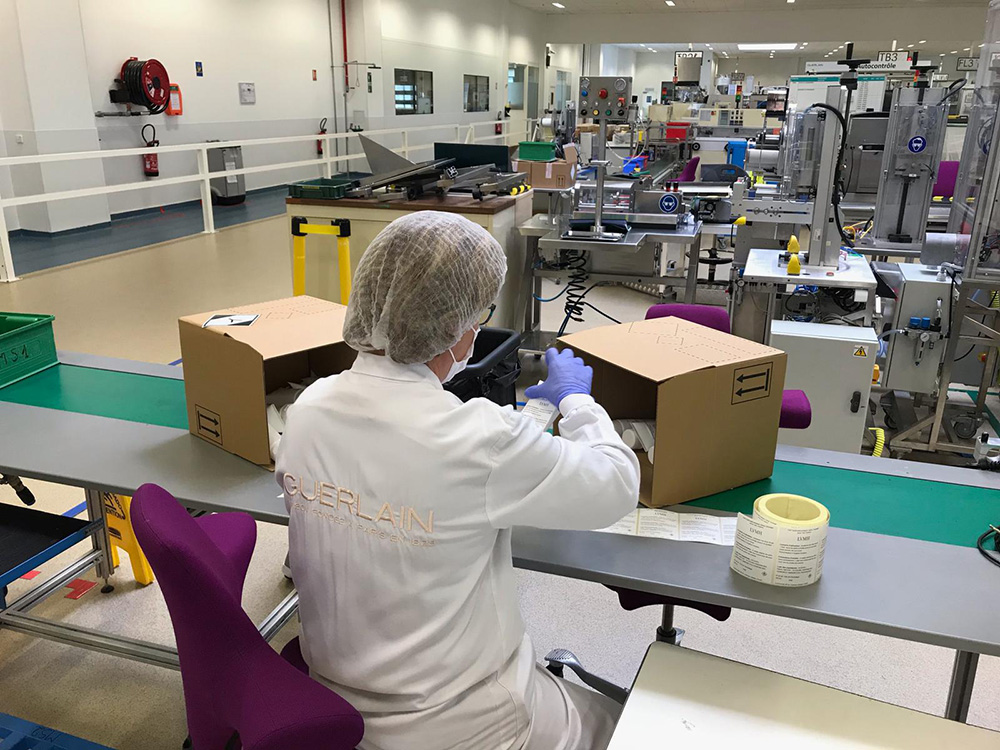
In light of the unprecedented effects on daily life we are experiencing due to COVID-19, Chris Donnelly, CEO at Verb, provides some perspective on business and the future, using lessons from China as a guide.
Coronavirus is primarily a human tragedy; thousands of people have been affected and thousands more will be in the coming months. We want to share some guidance on navigating this period as coronavirus continues to have a significant impact on the global economy, affecting small and large businesses alike.
As COVID-19 and social distancing carves into the markets in Europe and the US, China’s massive economy is beginning to fight back, providing some insight into what’s to come. The number of new cases identified in mainland China has reduced to approximately 10 per day and consumers, many having spent the better part of two months at home, are starting to venture out and release some pent-up spending energy. Shops, restaurants, tourist sites and businesses are reopening and commerce returning.
The early signs are positive, especially when looking at sales numbers in March as ecommerce takes off with luxury truly performing well. Digital engagement with brands has been at an all-time high through WeChat, Weibo and RED and this isn’t surprising considering the browsing and consideration time consumers have had during the lockdown.
Hospitality and travel were the industries hit hardest by the virus both in China and in most Western countries; however again, there are positive signs of things returning to normal. Hotel bookings in China in the first week of March surged 40 per cent from the previous week and Tongcheng-Elong – citing data from Beijing Zhuzher Information Technology – is predicting that bookings reach 90 per cent by the end of March. This is a strong indication of what could happen in the West and a useful metric for businesses to plan for recovery, with China approximately three months ahead.
With business in jeopardy in the UK, Europe and the US, China now offers a huge opportunity to drive revenue and customer acquisition. Many Western brands are looking to either launch in China or optimise what they are doing to find and replace revenue that has been lost in the West.
WHAT DOES THIS MEAN FOR THE UK, EUROPE & THE US?
Over the weeks and months ahead, a strong focus on communicating with your customers, building relationships and loyalty through clear messaging and added value is key. While consumer demand was down in China, it did not completely die out and digital engagement has grown. People have significantly shifted their habits towards online shopping for all goods and services, relying heavily on delivery – new habits are unlikely to go back to the pre-crisis status quo and digital adoption and communication is more imperative than ever.
Demonstrate purpose, authenticity and kindness. A beautiful example of this is LVMH, the world’s biggest luxury company, which switched all of its perfume and cosmetic factories (Christian Dior, Guerlain etc) to produce hand sanitiser gel that will be delivered free across France, addressing a critical shortage. The company has also ordered 40 million masks for medical professionals in France. Other companies around the globe are finding ways to support response efforts by providing money, equipment, masks, clothing and expertise.

In times of crisis, it is the brands that create the most value for their customers that will survive. Consumers, and especially luxury consumers, are hyper-discerning during crises and therefore, it is important to designate time and resources to add value for your customers, delighting and engaging them where possible.
While it was a very difficult set of circumstances, the brands that emerged strongest from the 2008 financial crisis were those that focused on the core values of their business, storytelling, communication and adding value. Brands around the world redefined themselves with new taglines and products like with Louis Vuitton and ‘The Art of Craftsmanship’, and more practically through the digitisation and globalisation of their businesses.
Coronavirus does have an important distinction: it will have increased the customer’s preference for digital interaction. The two key areas for any luxury or premium brand is storytelling, engagement and ROI marketing during this period and onwards. China’s experience gives us fresh insight; brands should not stop marketing but should adapt what they are doing to create beautiful, engaging moments with their customers through content and move towards clear, performance-based marketing that can show tangible returns in the short and medium-term as the market slows and then rebounds.
Of one thing, I am certain: we will not return to pre-crisis normal. It will be those brands that adapt now that will come out the strongest when our economies recover.

EXAMINING CHINA
Although retail spending fell by 20.5 per cent during the height of the Coronavirus quarantine period in China, for many sectors online sales held steady.
Food and beverage mostly held up throughout, though some import niche products felt the pain as consumers were more careful with their money. Cosmetics and beauty maintained a strong position and many brands within the sector are back to growing sales. Health and fitness experienced a mixed result – some brands boomed, such as local beauty brand Inoherb, which released a hand sanitiser during the crisis (part of a pivot towards a more holistic image of health and beauty) or Keep, the leading Chinese fitness app; while others, such as Nike, weathered tough losses.
Luxury is rebounding especially through consumers ‘revenge spending’ and many brands, such as Hermès, are reopening their stores. Just as Apple began closing its stores worldwide, it was reopening in China. Consumers are not able to travel abroad, which means that the majority of spending is domestic or through ecommerce.
Fashion was hit especially hard online during the outbreak. The shock has seen major shake-ups in the sector, not least of which was the full digitalisation of Shanghai Fashion Week and the launch of a digital, sustainable fashion week by WWD China. It seems the key lesson is that consumers are still very much engaged and interested to consume content and transact, even if they are not able to participate in person.
Brands may wish to reinvest spend towards what works for their business in China or reallocate some of their western spend into opening up this opportunity. The desire to reboot the economy is huge and many partners, such as Tmall partners (TPs), logistics firms and payment providers are willing to offer generous terms for new-to-market brands. The platforms themselves (Tmall, JD, etc) are offering up free traffic to stores and other incentives to help sweeten any deals if you know where to ask. Ensure you take the time to select the right partners, but now’s a good time to at least start those conversations.
There are so many cost-effective strategies to take hold of at this time. Find new audiences outside of Weibo and WeChat – for instance, engage with KOLs (key opinion leaders) through activations such as live streaming.
Bricks and mortar stores and restaurants were devastated through January and February. While retail stores routinely plan to have downtime over the week of Chinese New Year, restaurants expected their busiest week of the year with families banqueting and celebrating.
Consumers are cautiously going back to stores, though it will take a few months to return to normal. Restaurant punters are following their leaders back to local eateries, although many restaurants and diners adapted during the lockdown. According to the China Cuisine Association, food deliveries now account for over 60 per cent of catering business, whereas before the outbreak it was only 10 to 15 per cent. The shift online could become a long-term trend in China, much like what the SARS outbreak did for ecommerce in the country in 2003.
There are a number of luxury hospitality businesses launching delivery or pick-up hampers while many high-end restaurants are beginning to offer takeaway and delivery options. However, luxury brands shouldn’t simply spin up a new product and a Deliveroo store and expect success. As with all digital activations, the brand’s equity should be protected while new revenue streams are explored.
Chris Donnelly is CEO of VERB, a digital agency specialising in driving strategy, growth and revenue for luxury brands. VERB provides SEO, PPC, organic & paid social media, programmatic services, websites and content for some of the world’s leading brands such as Sunseeker, Boodles, Creed, Alexa Chung and Jimmy Choo. Verb has helped dozens of brands adapt over the last few weeks, with examples including accelerating the marketing of private jet companies, taking brands into China to capture opportunity, transitioning established restaurants onto food delivery services, creating a live streaming set-up for a fashion brand and much more.
Opening image credit: Samson

